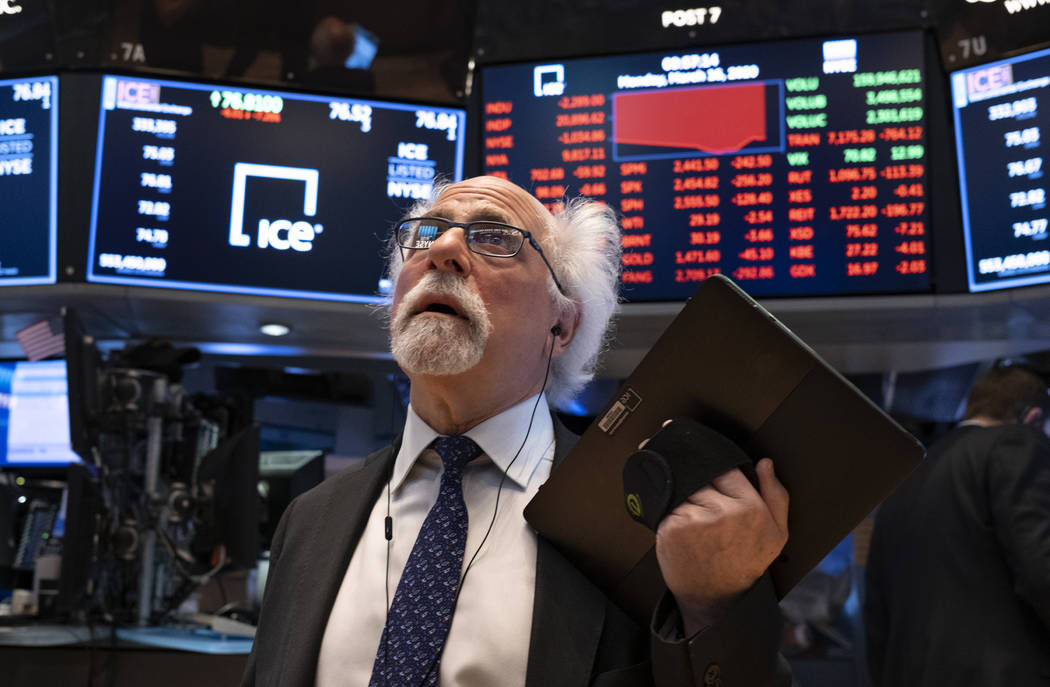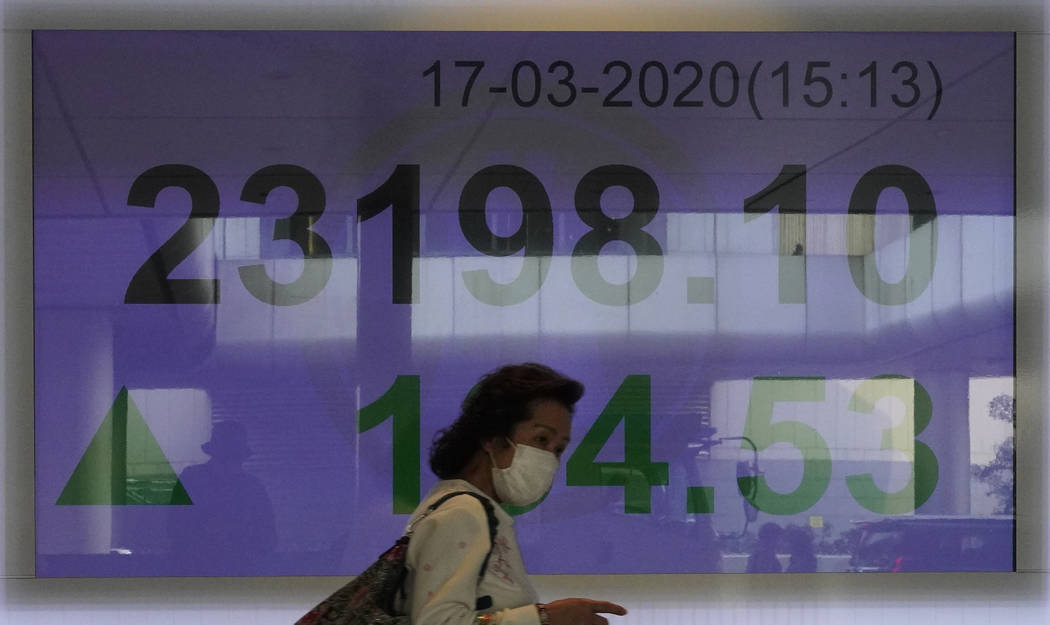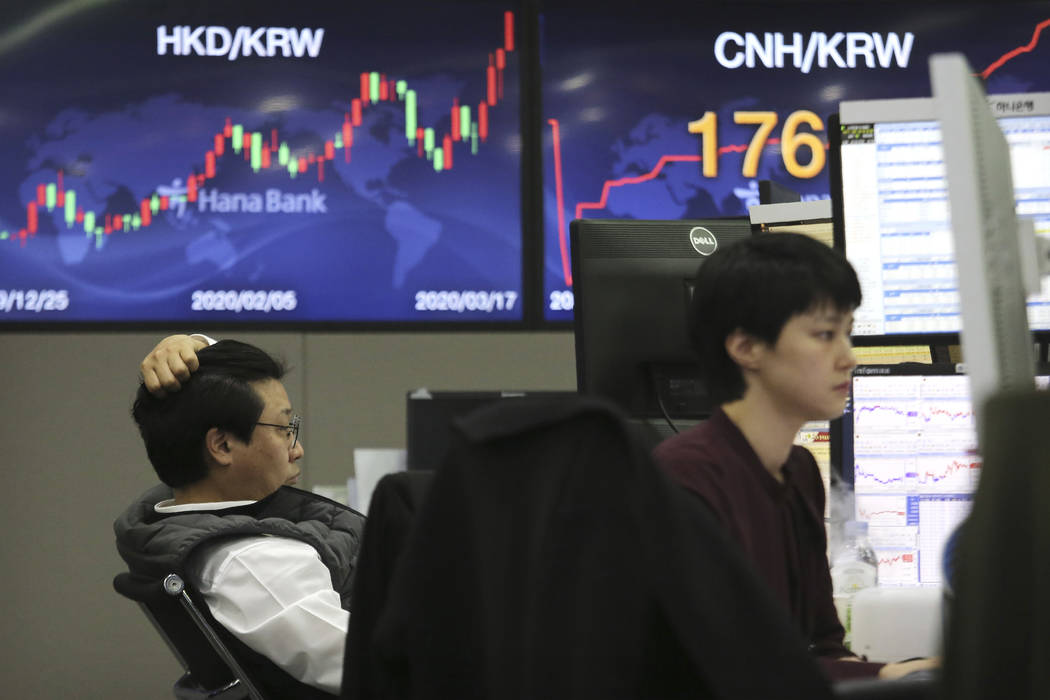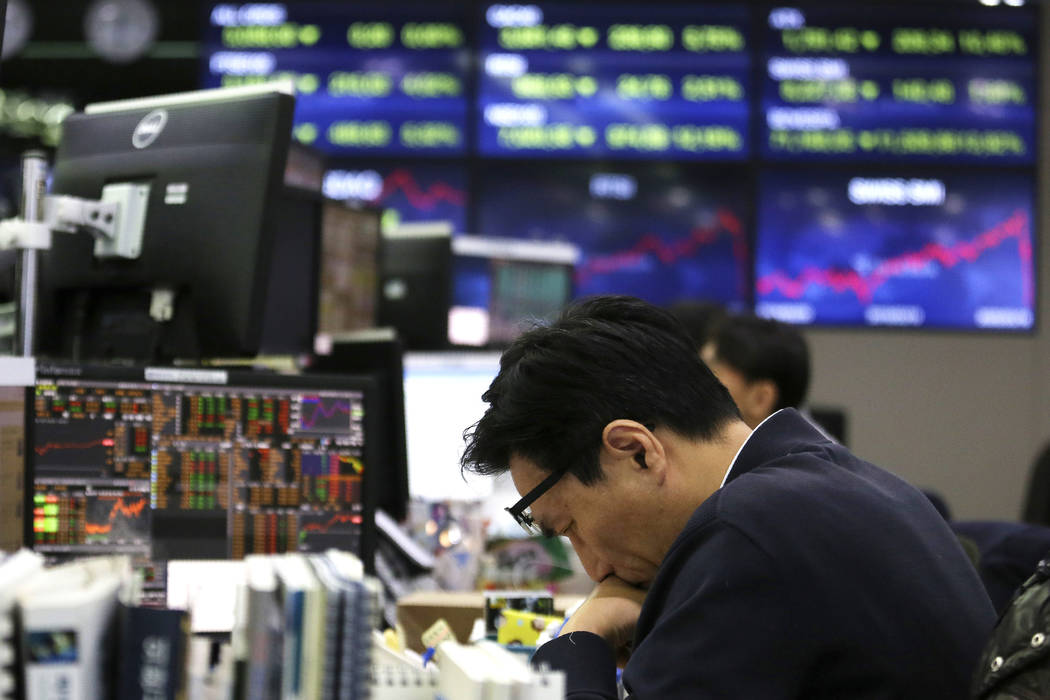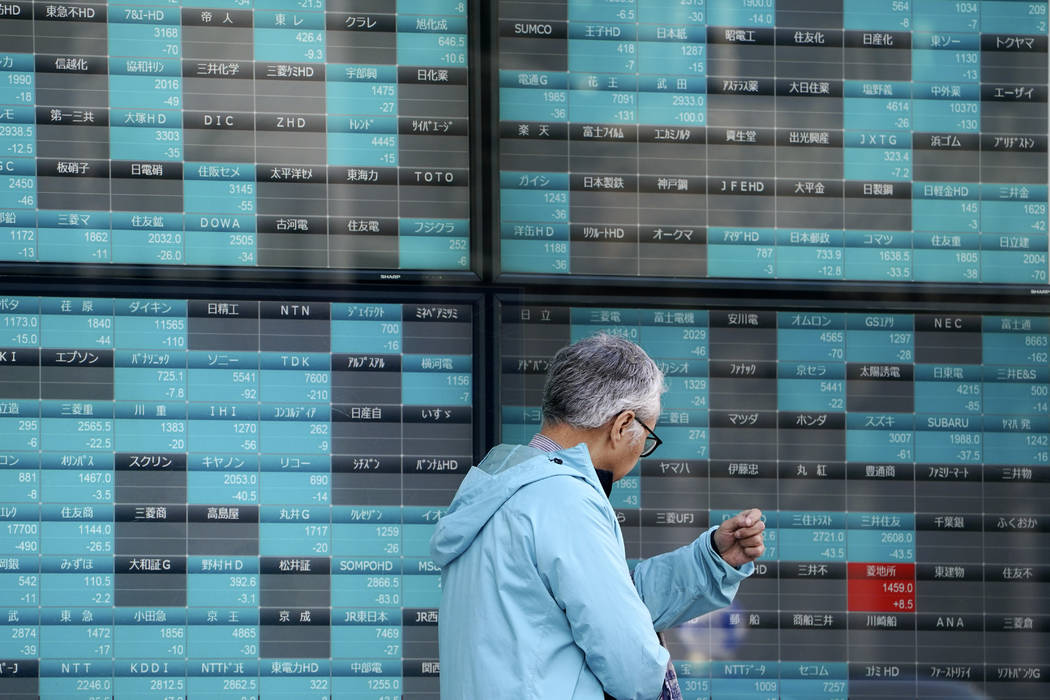US markets rally on Trump’s ‘go big’ on aid comment
NEW YORK — Stocks jumped Tuesday as President Donald Trump promised he’s “going big” with plans to blunt the economic pain caused by the coronavirus outbreak.
Markets around the world remain highly volatile as traders see a recession growing more likely, if it hasn’t begun already. Tuesday’s 4.7% gain for the S&P 500 meant it clawed back a little more than a third of its loss from a day before, its biggest in more than three decades.
Trump wants the government to send checks to Americans in the next two weeks to help support them while chunks of the economy come closer to shutting down, Treasury Secretary Steven Mnuchin said Tuesday.
Gains for stocks accelerated temporarily as Trump and Mnuchin spoke at a briefing, but neither gave details about how big the stimulus could be. Mnuchin is pitching Senate Republicans on a roughly $850 billion stimulus plan to help the economy, including relief for small businesses and the airline industry. The travel industry has been among the industries hardest hit by the outbreak. Planes sit grounded and hotels and casinos shut their doors.
Investors have been waiting for Washington to offer more aid for the economy. After flipping between gains and losses Tuesday morning, stocks turned decisively higher after the Federal Reserve revived a program first used in the 2008 financial crisis to help companies get access to cash for very short-term needs. It’s the latest in a string of big, emergency moves by the Fed and other central banks around the world to support the economy and smooth operations in markets.
No one expects such moves to fix the health crisis, but investors hope they can help blunt the economic blow.
“Government tends to show up late to the party with a bazooka,” said Barry Bannister, head of institutional equity strategy at Stifel. “It’s a bit of an overreaction, but that’s to be understood as normal for policy makers.”
“There are still a lot of questions in the mind of the market as to what will be enough,” said Robert Haworth, senior investment strategist at U.S. Bank Wealth Management. “It’s a start, but there’s still a lot to be determined.”
Ultimately, investors say they need to see the number of infections slow before markets can find a bottom. Worldwide cases now exceed 185,000. In the San Francisco area, nearly 7 million people were all but confined to their homes in the nation’s most sweeping lockdown.
For most people, the coronavirus causes only mild or moderate symptoms, such as fever and cough, and those with mild illness recover in about two weeks. But severe illness including pneumonia can occur, especially in the elderly and people with existing health problems, and recovery could take six weeks in such cases.
Uncertainty about when the outbreak will be contained and how much economic damage will be done to individuals and businesses has kept the markets on a roller coaster as steep losses give way to sharp gains and are wiped out again, sometimes all in the same day.
That’s made investors skeptical about market rallies.
“I don’t think we’re going to be able to trust movements in the market for some time,” said Tom Martin, senior portfolio manager with Globalt Investments.
Trading was unsettled around the world. European stocks swung from gains to losses and back to gains. South Korean stocks fell to their fifth straight loss of 2.5%, but Japanese stocks shook off an early loss to edge higher.
The Dow Jones Industrial Average see-sawed through the day. It went from up 600 points to down 300 to up 1,190 and then pulled back again. It was up 753 points, or 3.7%, in mid-afternoon trading. A day earlier, it lost nearly 3,000 after Trump said a recession may be on the way.
The S&P 500, which dictates the movements of workers’ 401(k) accounts much more than the Dow, is still roughly 26% below its record set last month and is close to where it was in late 2018, erasing most of the best year for stocks in decades.
Stocks have had a few rebounds since the market began selling off in mid-February on worries that COVID-19 will slam the economy and corporate profits. But all have ended up short-lived. The S&P 500 has had four days in the last few weeks where it surged more than 4%, a remarkably large amount in normal times, and has slumped more than 2.8% the following day each time.
The virus has spread so quickly that its effects haven’t shown up in much U.S. economic data yet. A report on Monday about manufacturing in New York State was the first piece of evidence that manufacturing is contracting due to the outbreak. On Tuesday, a report showed that retail sales weakened in February, when economists had been expecting a gain.
“The global recession is here and now,” S&P Global economists wrote in a report Tuesday.
They say initial data from China suggests its economy was hit harder than expected, though it has begun to stabilize. “Europe and the U.S. are following a similar path,” the economists wrote.



